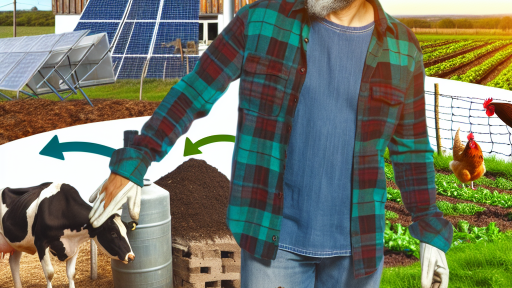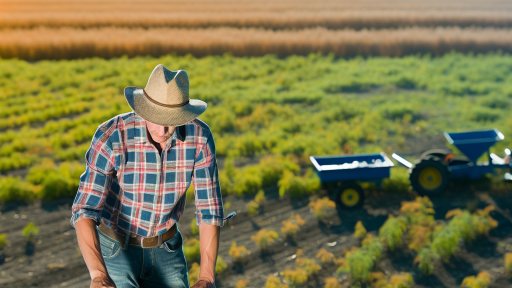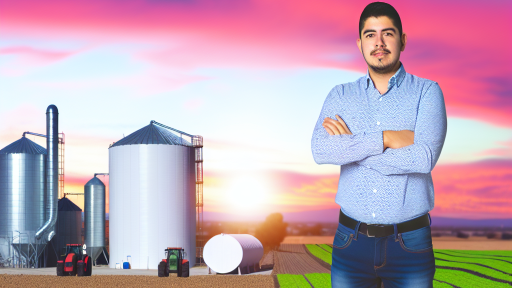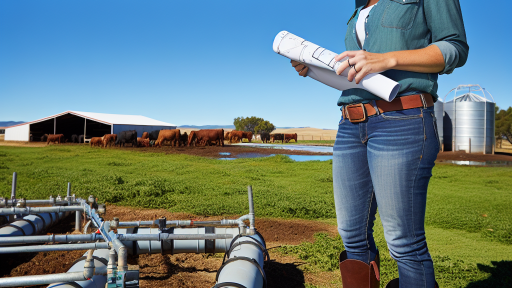Introduction to Pollinators
Importance of Pollinators
Pollinators play a crucial role in agriculture.
They help increase crop yields and enhance food quality.
In fact, over 75% of the world’s food crops depend on pollinators.
This includes fruits, vegetables, and nuts.
Without pollinators, many of these crops would face severe declines.
Types of Pollinators
Diverse species contribute to pollination.
Bees are the most recognized and effective pollinators.
Butterflies, moths, birds, and bats also aid in pollination.
Even some insects, like beetles, play significant roles.
This variety helps ensure successful pollination across multiple ecosystems.
The Role of Pollinators in Ecosystems
Pollinators maintain biodiversity within ecosystems.
They support the health of both wild and cultivated plants.
Furthermore, pollinators contribute to food security.
Healthy pollinator populations ensure the reproduction of flowering plants.
This, in turn, supports wildlife and other agricultural systems.
Transform Your Agribusiness
Unlock your farm's potential with expert advice tailored to your needs. Get actionable steps that drive real results.
Get StartedChallenges Facing Pollinators
Pollinators face numerous threats that endanger their populations.
Habitat loss due to urbanization and agriculture is significant.
Moreover, pesticide use severely impacts pollinator health.
Climate change also alters their habitats and flower availability.
These factors combined create challenges for sustaining pollinator populations.
Promoting Pollinator Health
Farmers can adopt practices to support pollinator health.
Creating habitats, such as flower strips, benefits pollinators.
Reducing pesticide use protects these essential insects.
Crop diversity also enhances resources for various pollinators.
By implementing these practices, farmers can sustain healthy pollinator populations.
Types of Pollinators: Bees, Butterflies, Birds, and Beyond
Bees
Bees are among the most efficient pollinators available.
Honeybees and bumblebees play crucial roles in crop production.
They transfer pollen between flowers, leading to successful fertilization.
Many crops depend heavily on bee pollination, enhancing yield quality.
In addition, native bee species also contribute significantly to plant diversity.
Butterflies
Butterflies are not just beautiful; they are essential pollinators.
Their long proboscis allows them to access nectar deep within flowers.
They typically prefer bright, fragrant flowers with ample landing space.
Moreover, butterflies help maintain the balance of ecosystems.
They participate in pollinating various wild plants, promoting biodiversity.
Birds
Certain bird species are effective pollinators as well.
Hummingbirds, for example, are attracted to nectar-rich flowers.
Their rapid wing beats enable them to hover while feeding.
Consequently, they assist in transferring pollen from one bloom to another.
Showcase Your Farming Business
Publish your professional farming services profile on our blog for a one-time fee of $200 and reach a dedicated audience of farmers and agribusiness owners.
Publish Your ProfileBirds often thrive in habitats that support diverse plant life.
Other Pollinators
Other creatures also contribute to the pollination process.
These include bats, beetles, and even some small mammals.
Bats play significant roles in tropical environments, especially for fruiting plants.
Beetles often visit flowers for pollen, aiding in the reproductive cycle.
Each of these pollinators has a unique relationship with the plants they visit.
Importance of Pollinators
Overall, pollinators are critical for food production.
They pollinate approximately 75% of global crops.
Moreover, their activities support healthy ecosystems and food webs.
By promoting pollinator health, we can ensure food security.
Therefore, protecting and supporting these species is vital for sustainable agriculture.
Understanding Pollination: How It Affects Crop Yield and Quality
The Role of Pollinators in Agriculture
Pollinators play a crucial role in agricultural ecosystems.
They facilitate the reproduction of flowering plants.
This process ensures the production of seeds and fruits.
Moreover, crops such as fruits, nuts, and vegetables benefit significantly from pollination.
Impact on Crop Yield
Effective pollination directly influences crop yield.
Studies show that crops with adequate pollinator presence yield more produce.
For instance, almonds rely heavily on bees for pollination.
In fact, a single bee colony can pollinate up to 2 million flowers in a day.
Farmers often observe a noticeable difference in yield when pollinators are plentiful.
Improving Crop Quality
Pollination not only increases quantity but also enhances quality.
Well-pollinated crops tend to be larger and more flavor-rich.
Furthermore, fruits from well-pollinated plants often have better color and texture.
This quality improvement can result in higher market values for growers.
Factors Affecting Pollination
Many factors influence the effectiveness of pollination.
For example, pesticide use can negatively impact pollinator health.
Additionally, habitat loss reduces the number of pollinators available.
Climate change also alters pollination patterns by shifting flowering times.
Strategies to Support Pollinators
Farmers can implement various strategies to support pollinator populations.
Planting diverse flowering crops can provide food and habitat.
Moreover, reducing pesticide applications fosters a healthier environment.
Creating buffer zones with native plants enhances pollinator habitats.
Finally, educating local communities about the importance of pollinators can promote conservation initiatives.
Discover More: Integrating Native Species on Your Farm
Threats to Pollinators
Pesticides
Pesticides pose significant dangers to pollinators like bees and butterflies.
Many common pesticides disrupt the nervous systems of these insects.
For example, neonicotinoids have been linked to declining bee populations.
Moreover, pesticide exposure can impair foraging behavior and navigation.
Farmers increasingly need to adopt safer pest management practices.
Using integrated pest management can minimize pesticide impacts.
Showcase Your Farming Business
Publish your professional farming services profile on our blog for a one-time fee of $200 and reach a dedicated audience of farmers and agribusiness owners.
Publish Your ProfileHabitat Loss
Urbanization and agricultural expansion lead to habitat loss for pollinators.
Natural landscapes are being converted into farmland and urban areas.
This disrupts ecosystems and reduces food sources for pollinators.
Moreover, monoculture cropping systems limit biodiversity in agricultural areas.
Creating pollinator-friendly habitats is essential for their survival.
Farmers can plant wildflowers along field edges to attract pollinators.
Climate Change
Climate change alters the distribution and health of pollinator populations.
Changes in temperature and weather patterns disrupt their life cycles.
Some pollinators struggle to adapt to these rapid environmental changes.
Additionally, shifting flowering times affect the availability of forage plants.
Mitigating climate change impacts requires concerted global efforts.
Adopting sustainable agricultural practices can help improve resilience.
You Might Also Like: Soil Health and Carbon Sequestration Techniques
Creating Pollinator-Friendly Habitats: Strategies for Farmers
Understanding the Importance of Pollinators
Pollinators play a critical role in agriculture.
They enhance crop yields and improve food quality.
Farmers rely on bees, butterflies, and other species for successful harvests.
Unfortunately, pollinators face numerous threats today.
This includes habitat loss, pesticide use, and climate change.
Designing Pollinator Habitats
Farmers can actively create pollinator-friendly habitats.
Begin by planting diverse flowering plants.
Choose native species to attract local pollinators.
Incorporate wildflowers along field edges and in non-cropped areas.
Provide blooming plants throughout the growing season.
Implementing Effective Land Management Practices
Proper land management aids in supporting pollinators.
Reduce pesticide use on flowering crops.
Seek organic alternatives that are safer for pollinators.
Practice crop rotation to enhance biodiversity.
Minimize tillage to preserve soil health.
Enhancing Habitat Connectivity
Habitat connectivity is vital for pollinator movement.
Create corridors of natural spaces between fields.
Incorporate hedgerows and buffer strips to link habitats.
Encourage neighbors and local farms to participate.
This collaboration can significantly increase habitat efficacy.
Monitoring and Adjusting Strategies
Routine monitoring helps assess the health of pollinator populations.
Farmers should observe changes in crop yields and pollinator diversity.
Adjustments may include modifying plant selections or management techniques.
Always stay informed about new research and best practices.
Continued education fosters a healthier environment for all.
Explore Further: Benefits of Integrated Pest Management in Farming
Integrating Pollinator Health into Farming Practices
The Importance of Crop Rotation
Crop rotation enhances soil health and reduces pests.
Showcase Your Farming Business
Publish your professional farming services profile on our blog for a one-time fee of $200 and reach a dedicated audience of farmers and agribusiness owners.
Publish Your ProfileIt helps maintain a diverse ecosystem on farms.
To maximize crop yield, farmers can alternate crops each season.
Such practices support pollinator populations and improve crop diversity.
Additionally, rotating crops can prevent the buildup of pathogens.
Diversity in Planting
Planting a diverse range of crops encourages an array of pollinators.
Native plants attract local pollinators better than non-native varieties.
Moreover, farmers can mix flowering plants within their fields.
This strategy provides continuous forage for insects throughout the growing season.
Benefits include improved pollination and increased crop productivity.
Best Practices for Incorporating Pollinators
Farmers should create habitats for pollinators on their farms.
Incorporating wildflower strips or hedgerows offers refuge for pollinators.
Maintaining a variety of blooming plants is essential for bees and butterflies.
Furthermore, avoiding pesticide usage during flowering is crucial.
Farmers can adopt integrated pest management to protect pollinator health.
Discover More: Organic Farming and Carbon Sequestration Benefits
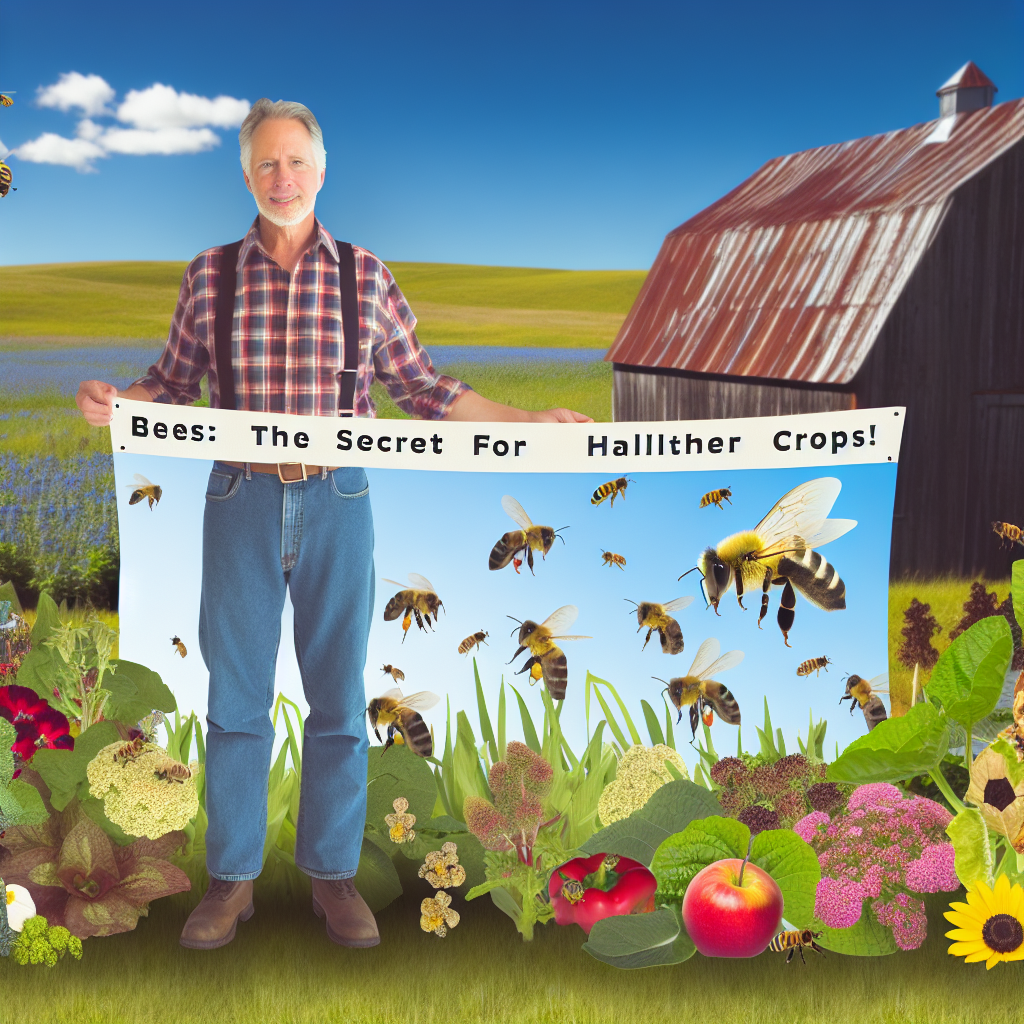
Benefits of Pollinator Conservation
Economic Advantages
Pollinators play a crucial role in agriculture.
Their activity significantly boosts crop yields.
This increase translates directly to higher farmer incomes.
Additionally, healthy pollinator populations enhance the quality of produce.
Consequently, farmers can command better prices for their crops.
Investing in pollinator-friendly practices can reduce costs as well.
This includes savings on pesticides and improved crop resilience.
Moreover, many consumers prefer products grown sustainably.
This preference can lead to increased market demand.
Environmental Benefits
Pollinators support healthy ecosystems and biodiversity.
They facilitate the reproduction of many wild plants.
This, in turn, supports local wildlife habitats.
Healthy pollinator populations contribute to soil health.
They promote plant diversity, which helps stabilize ecosystems.
Furthermore, natural habitats provide essential services.
These include flood control, carbon storage, and air purification.
Encouraging pollinator conservation combats climate change impacts.
Thus, protecting pollinators is vital for a sustainable environment.
Social Impact
Promoting pollinator conservation offers social benefits as well.
Local communities gain from diversified agricultural practices.
Education about pollinators raises awareness about environmental issues.
This awareness fosters community engagement and activism.
Additionally, preserving pollinators ensures food security.
A stable food supply contributes to healthier populations.
Furthermore, thriving ecosystems enhance recreational opportunities.
Showcase Your Farming Business
Publish your professional farming services profile on our blog for a one-time fee of $200 and reach a dedicated audience of farmers and agribusiness owners.
Publish Your ProfileThis promotes mental health and overall well-being in communities.
Community Involvement: Engaging Local Stakeholders in Pollinator Programs
Creating Awareness
Engaging the community starts with raising awareness about pollinators.
Local workshops can educate residents on their importance.
Schools can implement educational programs focused on pollinator species.
Moreover, social media campaigns can reach a broader audience.
Building Partnerships
Establishing partnerships is essential for effective engagement.
Collaborate with local farmers to promote pollinator-friendly practices.
Work with conservation organizations to develop shared goals.
Involve local businesses to create sponsorship opportunities.
Encouraging Participation
Encourage community members to take part in pollinator projects.
Organize volunteer days for establishing pollinator gardens.
Host events like “Pollinator Week” to celebrate local efforts.
Use surveys to gather input on community needs and interests.
Monitoring and Feedback
Monitoring programs help ensure the success of pollinator initiatives.
Create a system for community members to report progress.
Gather feedback to improve future projects based on experiences.
Regularly share updates to maintain enthusiasm and involvement.
The Future of Agriculture and the Role of Pollinators
Importance of Pollinators in Agriculture
Pollinators play a vital role in crop production.
They contribute to the reproduction of many plants.
This enhances biodiversity and ecosystems.
Healthy ecosystems support agricultural sustainability.
Moreover, a variety of crops relies on pollination.
Current Challenges Facing Pollinators
Pollinators face numerous threats today.
Habitat loss is a significant concern.
Additionally, pesticide use harms pollinator populations.
Climate change alters their natural habitats.
Furthermore, diseases can devastate pollinator species.
Sustainable Practices for Protecting Pollinators
Adopting sustainable practices is essential for pollinator health.
Farmers should reduce pesticide usage.
Creating pollinator-friendly habitats can help.
Cover crops provide food and nesting sites.
Maintaining biodiversity in farming landscapes is crucial.
The Economic Impact of Healthy Pollinator Populations
Healthy pollinator populations boost agricultural productivity.
This results in increased crop yields and farmer income.
Moreover, it promotes resilience in food systems.
Local economies benefit when pollinators thrive.
Consumers also gain from diverse food options.
Future Directions for Pollinator Conservation
Conservation efforts need more public involvement.
Education on pollinator importance is vital.
Governments can implement policies supporting pollinator health.
Showcase Your Farming Business
Publish your professional farming services profile on our blog for a one-time fee of $200 and reach a dedicated audience of farmers and agribusiness owners.
Publish Your ProfileCollaboration among farmers, scientists, and communities is necessary.
Investment in research on pollinator needs will aid their survival.

